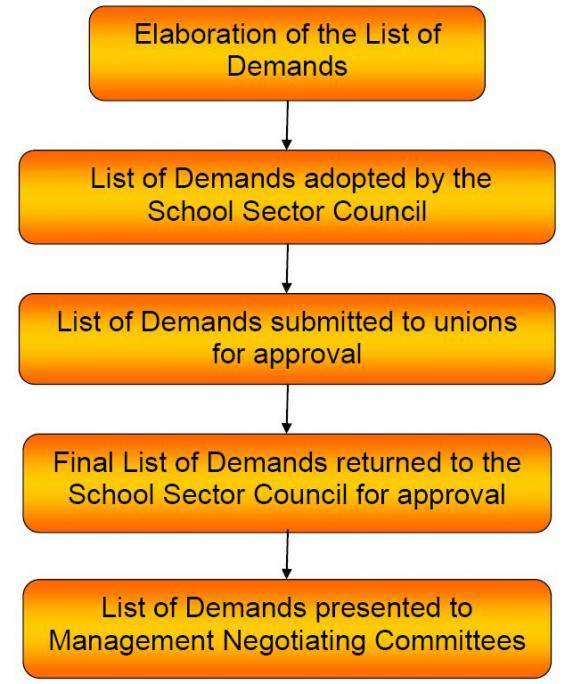Composition
The CSN School Sector Negotiating Committee is composed of five members of the Executive Committee. However if, at the time of negotiations, the Executive Committee does not include a representative of the English-Language School Boards, an additional person must be elected by the School Sector Council to represent the English-language School Board unions. In this case the composition of the Negotiating Committee will be increased from five to six members.
The School Sector Negotiating Committee has the double mandate of negotiating the Collective Agreement with two different groups of employers and at two separate bargaining tables.
Role
The Negotiating Committee’s role includes; preparing the List of Demands and submitting it for approval to School Sector unions; carrying out the research and work needed in order to develop convincing argumentation; organizing union activities in support of negotiations; consulting, informing and giving support to local unions in their General Assembly meetings; defending union demands at the Bargaining Table; and making recommendations to the School Sector Council for approval or rejection of Management demands. When negotiations are finally concluded, the Negotiating Committee signs the new Collective Agreement.
Consultation Process for Adopting the List of Demands
Negotiation Structure
In order for the Negotiating Committee to be able to sign the Collective Agreement, they must receive a clear mandate from the unions. To this effect, each union must call a General Assembly meeting so that a vote can be taken concerning the Tentative Agreement. For the mandate to be valid, a vote in favour of the Tentative Agreement must be given by the majority of unions. Moreover, these unions, who have voted in favour of the Agreement, must also represent the majority of CSN School Sector Union Members
Once a double majority has been reached, the unions who did not approve the Agreement are asked to rally with the majority by way of a second vote.


